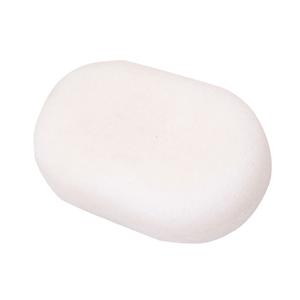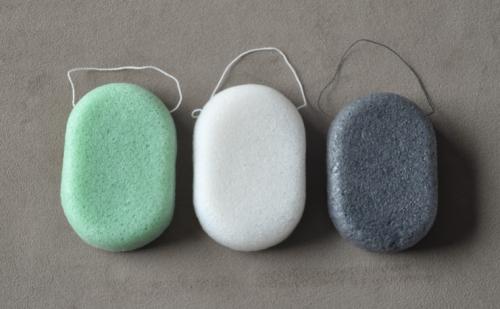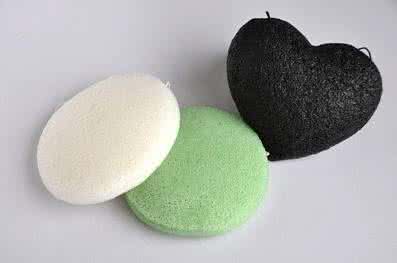About Konjac sponges
How does konjac sponge help the skin?
How to Use Konjac Sponge?
Konjac Sponge for Sensitive Skin
Konjac sponge -made by editable soluble fiber glucomannan
Konjac Sponge Varieties and Benefit
Reasons you should be using a Konjac sponge
The Konjac Sponge Benefits
The skin care marvel from the East – Konjac sponge
What is Konjac Sponges
Why you need a Konjac sponge
Benefit of Konjac sponge
Konjac
sponge for skincare
There are a lot of new gadgets, treatments and supplements that come to the market now and then, claiming miraculous results for skin care and ageing. But more often than not, the really effective ways to keep your skin healthy are quite simple and ancient – through cleansing with natural fibre derived cleanser.
Where does konjac sponge come from?

One of the most effective natural cleansers is konjac sponge, which is made from fibres derived from the konjac plant. Konjac is a plant found in Easter Asian countries such as Japan, China and Indonesia. The indigenous cultures of these regions have been making use of konjac for food preparation and medication.

The root fibres of the konjac plant can be used to make an excellent cleanser. For extracting its fibres, it is powdered and then mixed with calcium hydroxide. The mixture is then heated, frozen and then dehydrated. The end product is an excellent material to make a facial or body sponge. Some other additives such as activated charcoal or French clays may be added to it to enhance its benefits.

Characteristics of konjac sponge

Konjac sponge is quite gentle on the skin. It is softer than loofah, but has more texture than a kitchen sponge. It adsorbs a thin coat of water during use, forming a slick and soft coating over it. It has natural cleansing properties and can even work without any cleansing agent like a soap or facewash, though you can use it for better cleaning results.
Proper use and storage
In order to obtain best results from a konjac sponge, it is essential that you use it right and take appropriate care of the sponge. It cannot handle the rough handling as a synthetic plastic based sponge. Its fibres are delicate and deteriorate quickly if used inappropriately.
Konjac sponge must always be stored dry. When dry, it is small and hard. Do not use it in this form, it is quite abrasive and can damage your skin. Before first use, it needs to be soaked in warm water for 5-10 minutes, and after that, you can soak it for 1-2 minutes in warm water before each use. After soaking, it will expand in size by about 50% and become much soft and pliable. Then take the sponge and lightly squeeze out excess water. If you are using any cleansing agent such as soap or facewash, apply a little to the sponge. The sponge will make a rich lather, and hence you don’t need too much of soap or facewash. Then gently rub the sponge on the skin, moving in circular motions. Focus on oily and blackhead prone areas. The sponge will easily remove most oil, dirt and any sunscreen or light makeup. It is not really ideal for removing heavy makeup, it is recommended to use a makeup remover before using a konjac sponge. If you are using a cleansing agent, and you feel that you need more lather, you can add more of the cleansing agent during your use. Avoid use on any cuts, wounds, burns or irritated skin. If you are using any skin medications, consult your dermatologist before use.
After use, the sponge must be rinsed with cold water to get it clean. Then remove as much water as possible by squeezing it between your flat palms. So not wring it squeeze it hard in your fist, since it can damage the gentle fibres and reduce its usable life. Then leave it to dry in an open place with plenty of airflow, such as on a drying rack. Don’t leave it in the shower, it must be stored in a dry place, or else it is susceptible to getting mould or fungus due to organic materials. Similar to other organic materials, its life can be extended by storing in the refrigerator. Since it is made of organic plant matter, it can use occasional disinfection. About every alternate week, you can disinfect it by placing it in about 80°-90° C hot water for 3-5 minutes. Do not place it in boiling water or overdo it, since it will reduce the usable life of the sponge. When it starts disintegrating, falling apart or stops expanding when soaked in water, you know that it is time to toss it away and get a new one. The typical life of a sponge is about 1-1.5 months. You can dispose of the sponge in compost, since it is 100% natural and will decompose naturally.
Different varieties of konjac sponge
Konjac sponge is offered in many varieties by various manufacturers. The one made of pure konjac without any additives is white coloured konjac sponge. It is quite soft and can be used by most people without any issues. However, some manufacturers add some extra additives to enhance its benefits.
Black coloured konjac sponge has added activated charcoal. Charcoal is quite effective at adsorbing a lot of impurities, and hence it is added in many cosmetics to enhance cleansing. It is more effective are removing oils and hence more appropriate for teenagers who are more prone to sweating. It is quite effective at preventing acne and blackheads.
The green coloured sponge has French green clay as an additive. The green clay is a very good absorbent, and is commonly used for detoxification. It can help combat acne-causing bacteria. The red coloured sponge contains red clay, which removes dead skin more effectively. It can also boost blood circulation to the skin and make the skin look more radiant and hydrated. It is quite useful for sensitive, dry or mature skin. There is also a pink coloured konjac sponge sold by some manufacturers, which contains a mixture of white and red clay as an additive. It is useful for those with extremely sensitive skin, since it is even gentler on skin.
Many manufacturers also sell large sized sponge for bathing. There are also baby bath versions available. While konjac sponge used to be used extensively in Japan, today there are online retailers internationally, especially in the US and Europe, which sell various konjac sponges, bringing its benefits to the western world.

